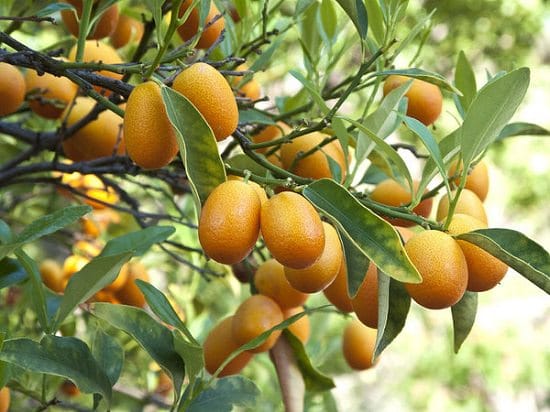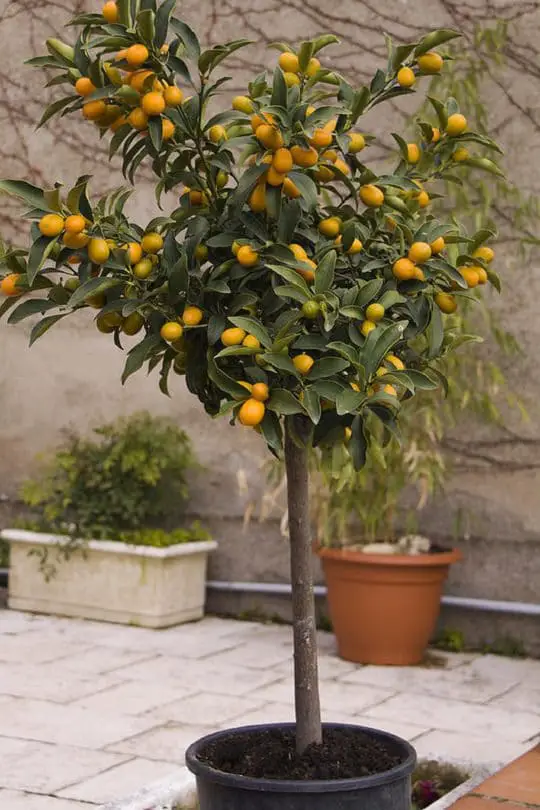Kumquat Tree Care and Growing is easy even in pots due to their small size. They’re more cold tolerant than other citrus trees as well!
USDA Zones: 8-11
Propagation Method: Seeds, Cutting, Grafting
Difficulty: Easy to Moderate
Soil Type: Acidic
Height: Up to 15 feet
Other Names: Citrus japonica, Fortunella, Cumquat
Kumquat tree produces fragrant flowers in late spring, followed by small citrus fruit in the fall. Fruits look similar to oranges but come to the size of a plum. The flavor is a combination of sweetness and bitterness.
If you’re growing kumquat tree between zone 9-11, it will grow easily. Below these zones, plant it in containers. This citrus tree should be planted where there is plenty of sunshine. Overall, growing kumquat tree is easy as long as you follow a few simple tips to care for plant.
Kumquat trees can withstand temperature down to 14 F (-8 C) and light frost, they are suitable for planting in cold climates as they’re more cold-hardy than their cousins. They remain dormant during the late fall and winter unless they’re in a frost-free climate.
Also Read: How to Grow a Lemon Tree in a Pot
Growing a Kumquat Tree
Kumquat trees can be planted from seeds, but it is better to buy a grafted potted plant from a reputed nursery. Like other citruses, it also grows best in an area that remains warm and receives full sun. However, it is also possible to grow it in partial shade, plant it under a large tree, which will help the plant in getting additional frost protection during the winter.
Kumquat trees are dwarf and seldom goes high above 3 meters (10 to 12 feet), so you don’t need to assign a big space to grow them in your garden. This makes growing kumquat in containers possible too.
Growing Kumquat Tree in a Pot
Growing kumquat tree in a pot is fairly easy due to its small size. There are many dwarf varieties available as well. You can start in a small 5-gallon pot and re-pot in one or two sizes larger pot, once the plant outgrows the existing container. One more advantage is you can move container-grown kumquats indoors when the weather is not favorable.
Kumquat Tree Care
Watering and Fertilizing
At the beginning of planting a kumquat tree, you will need to water more and keep the soil moist so that the plant will establish itself well on the ground.
Once the plant is established, reduce watering, when you find the topsoil dry. While the tree is in bloom, or if the fruits are developing you’ll need to care about watering, making sure the soil is evenly moist around the tree.
Withhold fertilization for the first month after planting. After the first month, fertilize the plant three times a year, in spring, early summer and late summer.
Pruning Kumquat Tree
Prune after the harvest in fall but before the arrival of new flowers. Remove any dead or broken branches. If you notice suckers at the base of your tree, prune these too.
Pests and Diseases
Kumquat trees are susceptible to fungal diseases, poorly drained soil and overwatering can cause root rot. Aphids can be a major problem with this citrus variety.
Also Read: How to Grow Calamondin




